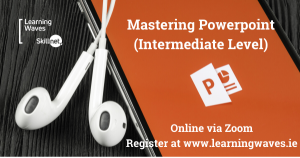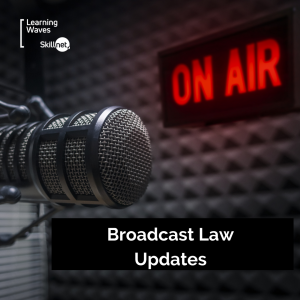Diploma in Audio Production.
Course Aims
This course gives you the tools to produce and mix great audio content for broadcast, online, social, recorded/live music, radio advertising, documentary making, audio books and podcasts.This course enables you to further develop your understanding of how to manipulate sound through interactive workshops, online content and real-life case studies. The course will focus on the core areas of sonic principles, sound manipulation, mixing and production.
Course Brief
Module 1 - Introduction to Audio Production
- Bandwidth of Sound
- Challenges/Resistance to production investment
- Sonic Branding
- Resources
- The exam/qualification
- Q&A plus requests
Module 2 - Radio Production and Audio Theory
- Waveform, amplitude, frequency, phase, loudness, signal to noise
- Introduction to Digital Audio
- Sampling frequency, bit-rate, codecs
- Audio quality discussion, how good is good enough?
- Listening
Module 3 - Recording VO Artists and Musicians
- Microphones : Mic choice, polar patterns, placement, technique and hardware
- Mic/line input channel : Pre-amp, EQ, dynamics, meters, noise floor
- Recording : Input and output level, gain stages, distortion, breath control, EQ, dynamics control
Module 4 - DAWS for Radio/Podcast Production
- Adobe Audition Pro, Pro Tools, Apple Logic, Steinberg Cubase, Ableton Live
- Recording and DAW : input select, level, latency and monitoring
- DAW settings : Frequency and Bit rate
- Hardware considerations
- Storage and Backup
- Timeline and timing, meters and tempo
- Headphones : Good and Bad, hardward solutions, headphone mixes v studio
Module 5 - Radio Commericial Tracking
- Naming channels, files, auxs etc
- General file handling
- Tracking : Recording styles and techniques, looping, comping, punch in/out
- Tracking : Saving and save backup
- Performance production
- Discussion, knowing what you want and when you've got it
Module 6 - Radio/Podcast Creativity
- Writing and Briefing for radio commercials/podcasts
- Where do ideas come from
- Speed-creation techniques
- Digital non-linear gives us option to record first, compose later
- MIDI and Virtual Instruments, quantisation, lopps etc
- Basic synthesis
- Sonic Brand Triggers
- Briefing musicians
Module 7 - Editing Radio Ads and Podcasts
- Basic editing functions, non-linera techniques, cutting, trimming, clip functionality
- Editing : Comping, clip gain, normalisation, fades and cross fades
- Editing : Arrangement, re-arrangement,/remixing
- Advanced editing intro : Compansion, time constraints
- Advanced editing intro : Pitch correction/manipulation, format control, Melodyne, Auto-tune etc
- Advanced Editing : ADR and auto alignment
- Advanced editing : Post Production, de-noise, de-reverb etc
Module 8 - Mixing Radio Ads and Podcasts
- Mixing: Starting the mix, meters, gain staging.
- Mixing: Plug-ins, what goes where and why?
- Mixing: EQ and dynamics.
- Mixing: Reverb and time domain effects.
- Mixing: Intro to automation.
- Mixing: Mix Referencing.
Module 9 - Mixing - Mastering Radio and Podcasts
- Mixing: Parallel processing.
- Mixing: Automation.
- Mixing: When is a mix finished?
- Mixing: Output stage, bouncing and filetypes.
Module 10 - Q&A plus Assignment Presentation
- Pre-Exam Content Assessment
- Interview Preparation
- Content Check
Course details updated 30th March 2022
Who is this content for?
This course is aimed at anybody who wants to improve their audio mixing & production skills. Focussed on the core areas of sonic principles, sound manipulation, mixing and production. This course gives you the tools to produce and mix great audio content for broadcast, online, social, recorded/live music, radio advertising, documentary making, audio books and podcasts.This course is aimed at all those working with audio for programmes, audio for imaging/production, audio for podcasts etc across the sector. Participants will gain a Diploma in Audio Production from the London College of Music on completion of the programme.
Training Method
This course will be delivered on-line via Zoom.







